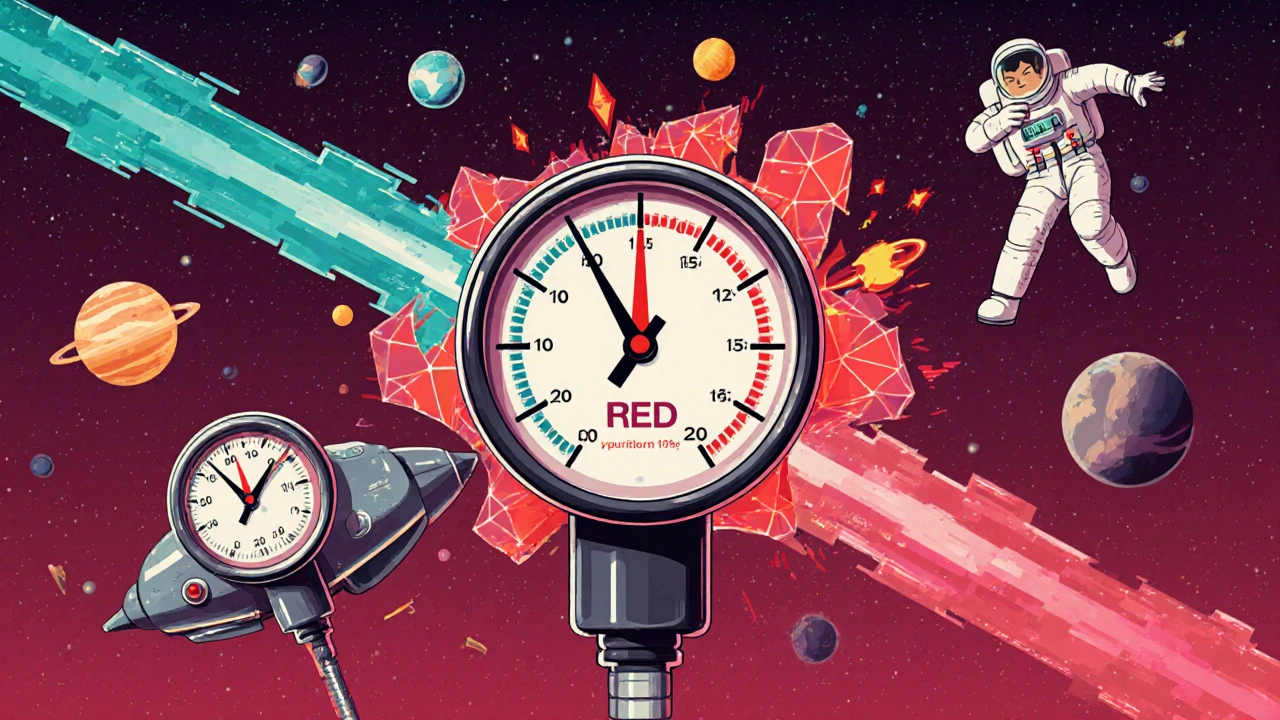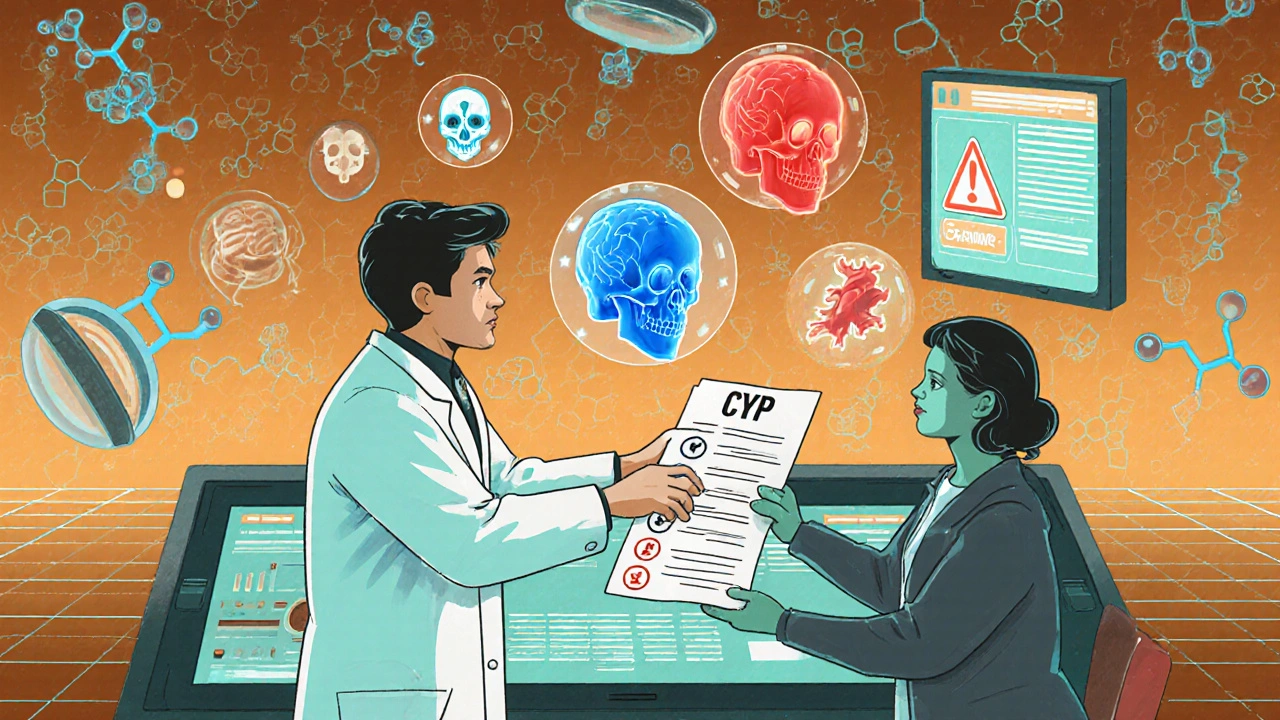Drug Interaction Checker
Enter the medications you're taking. The tool will identify potential interactions and classify them as pharmacokinetic or pharmacodynamic.
This tool provides educational information only. Always consult your healthcare provider or pharmacist before making any medication changes.
When you’re taking more than one medication, it’s not just about whether each drug works on its own-it’s about how they interact with each other. Two drugs might be perfectly safe alone, but together, they could cause dangerous side effects, reduce effectiveness, or even lead to hospitalization. The key to understanding why this happens lies in two core concepts: pharmacokinetic and pharmacodynamic interactions. These aren’t just buzzwords-they’re the foundation of safe prescribing, especially for older adults or people on multiple medications.
What Are Pharmacokinetic Interactions?
Pharmacokinetic interactions are all about what your body does to the drugs. Think of it like this: your body is a factory that absorbs, distributes, breaks down, and gets rid of medications. If one drug interferes with any of those steps, it changes how much of another drug actually reaches your bloodstream-and that’s where trouble starts. The four main processes involved are called ADME: Absorption, Distribution, Metabolism, and Excretion. Let’s break them down with real examples.- Absorption: Some drugs block others from being absorbed. For instance, antacids like Tums or Maalox can reduce the absorption of antibiotics like ciprofloxacin by up to 90%. That means the antibiotic might not work at all if taken with an antacid.
- Distribution: Drugs travel through your blood, often stuck to proteins. If two drugs compete for the same protein binding sites, one can push the other into the bloodstream as free, active drug. Warfarin, a blood thinner, can be displaced by phenylbutazone, causing its free concentration to spike by 300%. That’s a recipe for serious bleeding.
- Metabolism: Most drugs are broken down by liver enzymes, especially the CYP450 family. CYP3A4 is the most common one-and it’s a big target. Clarithromycin (an antibiotic) inhibits CYP3A4, which can cause simvastatin (a cholesterol drug) to build up to 10 times its normal level. That’s why doctors warn you not to take them together.
- Excretion: Your kidneys flush out drugs. Probenecid, used for gout, blocks the kidney’s ability to clear penicillin, making the antibiotic stay in your system longer. That can be helpful in some cases, but risky if you’re not monitoring.
These interactions are often predictable. If you know a drug affects CYP3A4, you can check if another drug is metabolized by it. That’s why tools like the Flockhart Table exist-they map out which enzymes are inhibited or induced by common drugs.
What Are Pharmacodynamic Interactions?
Pharmacodynamic interactions are different. Here, it’s not about how much drug is in your system-it’s about what the drugs do to your body when they’re already there. Two drugs can hit the same target, amplify each other, or cancel each other out. There are three types:- Synergistic: The combined effect is stronger than the sum of the parts. Sildenafil (Viagra) and nitrates (like nitroglycerin) are a deadly combo. Both relax blood vessels. Together, they can crash your blood pressure to dangerous levels-sometimes fatally.
- Additive: The effects just add up. Warfarin and aspirin both thin the blood. Take them together, and your risk of bleeding goes up significantly. Same with alcohol and benzodiazepines-both depress the central nervous system. Together, they can slow your breathing to a stop.
- Antagonistic: One drug blocks the other. Naloxone (Narcan) reverses opioid overdoses by kicking opioids off their receptors. Beta-blockers and beta-agonists (like albuterol) fight each other in the lungs-one tightens airways, the other opens them.
What makes pharmacodynamic interactions tricky is that they can happen even when drug levels are perfectly normal. You might take two drugs at safe doses, but if they act on the same system-like the heart, brain, or kidneys-the result can be unpredictable. That’s why antidepressants like SSRIs and MAO inhibitors are never mixed: even small amounts can trigger serotonin syndrome, a life-threatening condition.
Why the Difference Matters for Treatment
Knowing whether an interaction is pharmacokinetic or pharmacodynamic changes how you handle it.- Pharmacokinetic interactions can often be managed with dose changes. If clarithromycin raises simvastatin levels, switch to a lower dose of simvastatin-or pick a different statin like pravastatin that doesn’t rely on CYP3A4.
- Pharmacodynamic interactions? Often, the only safe option is to avoid the combination entirely. You can’t just lower the dose of both drugs if they’re both depressing your breathing or overstimulating your heart. The risk doesn’t go down linearly-it stays high.
That’s why narrow therapeutic index drugs-like warfarin, digoxin, or phenytoin-are so dangerous. A tiny change in their concentration can tip you from safe to toxic. About 68% of serious interactions with these drugs are pharmacokinetic. But for drugs that affect the brain or heart, pharmacodynamic interactions are the bigger concern. For example, 78% of serious CNS drug interactions involve pharmacodynamic effects.

How Doctors and Pharmacists Catch These Interactions
Modern healthcare systems use tools to flag risks before a prescription is filled. Electronic health records like Epic now screen for over 2,200 high-severity interactions-1,247 pharmacokinetic and 983 pharmacodynamic. But technology isn’t perfect. Many interactions still slip through. That’s where pharmacists come in. A 2022 survey by the American College of Clinical Pharmacy found that when pharmacists actively review medication lists, they reduce adverse drug events from interactions by 42%. That’s not a small number-it’s life-saving. Key monitoring practices include:- For additive CNS depressants: Check respiratory rate (below 12 breaths per minute is dangerous) and oxygen levels (below 90% is a red flag).
- For blood thinners: Monitor INR levels. Above 4.0 means high bleeding risk.
- For blood pressure drugs: Watch for systolic BP changes over 30 mmHg-especially when mixing NSAIDs with ACE inhibitors. NSAIDs can reduce the effect of blood pressure meds by 25-30%.
Therapeutic drug monitoring (TDM) is critical for drugs with tight safety margins. Around 37 medications, including lithium and vancomycin, have established blood level targets. If levels drift, it’s often because of a pharmacokinetic interaction.
What’s New in 2025?
Science keeps evolving. In 2023, the FDA updated its guidelines to require testing interactions with 11 CYP enzymes and 8 transporter proteins-up from just 7 enzymes in 2017. That’s because we now know how many drugs rely on transporters like P-glycoprotein to enter or leave cells. Pharmacogenomics is also changing the game. The Clinical Pharmacogenetics Implementation Consortium (CPIC) now has 32 gene-drug pairs that affect how people metabolize drugs. For example, if you’re a poor metabolizer of CYP2D6, even normal doses of codeine can turn into dangerous levels of morphine. New drug classes are adding complexity. Immune checkpoint inhibitors used in cancer therapy can interact with immunosuppressants, increasing infection risk. SGLT2 inhibitors for diabetes, when combined with loop diuretics, raise the risk of dehydration by more than double. Even AI is stepping in. A 2023 study in Nature Medicine showed a machine learning model predicted pharmacodynamic interactions with 89% accuracy-better than traditional methods. These tools won’t replace clinicians, but they’ll help spot hidden risks.
What Should You Do?
If you’re on three or more medications, here’s what to do:- Keep a current list of everything you take-including over-the-counter drugs, supplements, and herbs.
- Ask your pharmacist: “Could any of these interact?” Don’t assume your doctor knows every combo.
- Watch for new symptoms after starting or stopping a drug. Did you feel dizzy? More tired? Bleeding? That’s a red flag.
- Don’t stop or change doses without talking to your provider. Even small changes can trigger an interaction.
- Use one pharmacy for all your prescriptions. They can track interactions across all your meds.
It’s not about fear-it’s about awareness. Most interactions are preventable. The goal isn’t to avoid all drugs, but to use them safely. Understanding the difference between pharmacokinetic and pharmacodynamic interactions gives you the power to ask the right questions and protect your health.
What’s the difference between pharmacokinetic and pharmacodynamic drug interactions?
Pharmacokinetic interactions affect how your body processes a drug-like how it’s absorbed, broken down, or cleared. Pharmacodynamic interactions affect how the drug works in your body, like whether two drugs amplify or cancel each other’s effects. One changes drug levels; the other changes the body’s response to those levels.
Can pharmacokinetic interactions be fixed with dose changes?
Yes, often. If one drug boosts the level of another by blocking its metabolism, lowering the dose of the affected drug can help. For example, reducing simvastatin from 40mg to 10mg when taking clarithromycin avoids dangerous buildup. But this doesn’t work for all drugs-especially those with narrow safety windows.
Are pharmacodynamic interactions more dangerous than pharmacokinetic ones?
Not always more dangerous, but often harder to predict. Pharmacokinetic interactions can be monitored with blood tests, but pharmacodynamic ones can cause severe reactions even when drug levels are normal. For example, mixing SSRIs and MAO inhibitors can trigger serotonin syndrome-even if both drugs are at safe doses.
Which drugs are most likely to cause serious interactions?
Drugs with narrow therapeutic indexes-like warfarin, digoxin, lithium, and phenytoin-are high-risk because small changes in level can cause toxicity. Also, CNS drugs (antidepressants, opioids, benzodiazepines), blood thinners, and heart medications have high interaction potential. CYP3A4-metabolized drugs (like statins, some antibiotics, and immunosuppressants) are especially common culprits in pharmacokinetic interactions.
How can I check if my meds interact?
Ask your pharmacist-they have access to clinical databases that flag interactions. Use one pharmacy for all prescriptions so they can track everything. Apps like Medscape or Epocrates can help, but they’re not foolproof. Always confirm with a healthcare provider before making changes.
Do supplements and herbs cause drug interactions?
Absolutely. St. John’s wort can reduce levels of birth control pills, antidepressants, and blood thinners by inducing CYP3A4. Garlic and ginkgo can increase bleeding risk with warfarin. Even grapefruit juice can block drug metabolism. Always tell your provider what supplements you’re taking.






Derron Vanderpoel
November 20, 2025 AT 11:10bro i took ibuprofen with my blood pressure med and woke up feeling like my head was gonna explode. never again. also why is grapefruit juice on the enemy list? i drink it every morning.
Dana Dolan
November 21, 2025 AT 20:23Just wanted to say this is one of the clearest explanations I’ve ever read on this topic. Even my pharmacist was impressed when I showed her this. Thanks for writing it.
Zac Gray
November 22, 2025 AT 10:01Let me tell you, I used to think all drug interactions were just hype until my grandma ended up in the ER because she was taking St. John’s Wort with her antidepressant. Turns out, that ‘natural remedy’ is basically a chemical grenade in your liver. And yeah, it’s not just the big pharma stuff-herbs, supplements, even your morning coffee can mess with your meds. I now keep a color-coded spreadsheet. No joke. My wife thinks I’m obsessive. I think she’s one missed dose away from a tragedy.
Joe Durham
November 23, 2025 AT 01:57Biggest thing I learned? Don’t trust apps. I used one that said my combo was ‘low risk’-turned out it didn’t even check for the CYP2D6 variant I have. Got hospitalized. Now I only trust my pharmacist and my own notes. Write everything down. Even the ‘tiny’ stuff.
river weiss
November 24, 2025 AT 05:14One critical point missing here: many pharmacokinetic interactions are time-dependent. For example, grapefruit juice inhibits CYP3A4 for up to 72 hours after ingestion. So even if you take your statin 12 hours after your OJ, you’re still at risk. Similarly, enzyme induction (like from rifampin) takes days to develop and weeks to resolve. This isn’t just about same-day combos-it’s about chronic exposure patterns. Always consider the half-life and duration of effect, not just co-administration.
Kara Binning
November 25, 2025 AT 06:31OMG I JUST REALIZED I’VE BEEN TAKING MELATONIN WITH MY ANTI-DEPRESSANT FOR 3 YEARS. IS THAT WHY I’VE BEEN SO SLEEPY ALL DAY?? I’M GOING TO CALL MY DOCTOR RIGHT NOW. I FEEL LIKE AN IDIOT BUT ALSO SO RELIEVED I FINALLY KNOW WHY I’M A ZOMBIE.
Christopher K
November 27, 2025 AT 00:34Of course the article is 10 pages long. In America we pay $200 for a pill and then $500 for a 12-page PDF explaining why it might kill you. Meanwhile, in Germany they just say ‘don’t mix these’ and move on. We turned healthcare into a horror novel.
Steve and Charlie Maidment
November 28, 2025 AT 21:25Okay but let’s be real-how many people actually read this stuff? I’ve seen patients bring in 17 different bottles, half of them expired, and expect the doctor to magically know what’s in them. And then they get mad when the pharmacist says ‘maybe don’t take that with this.’ It’s like asking a chef to guess what’s in your fridge without looking. We’ve outsourced responsibility to the system. And now we’re surprised when it fails.
Michael Petesch
November 29, 2025 AT 17:21As someone from a country where polypharmacy is less common due to centralized care, I’m struck by how decentralized and reactive the U.S. system is. In Ireland, for example, all prescriptions are linked to a national database, and pharmacists are legally required to review all new prescriptions against existing ones. The burden doesn’t fall on the patient. Perhaps the real issue isn’t the science-it’s the infrastructure.
Nick Lesieur
November 29, 2025 AT 19:21you know what’s funny? the article says ‘ask your pharmacist’ like they’re some saintly oracle. nah. i’ve had pharmacists tell me ‘it’s fine’ then 3 weeks later, i’m in the ER and they say ‘oh yeah, we flagged that in the system but we assumed you knew.’ so who’s really responsible here? not the pharmacist. not the doctor. just me. again.